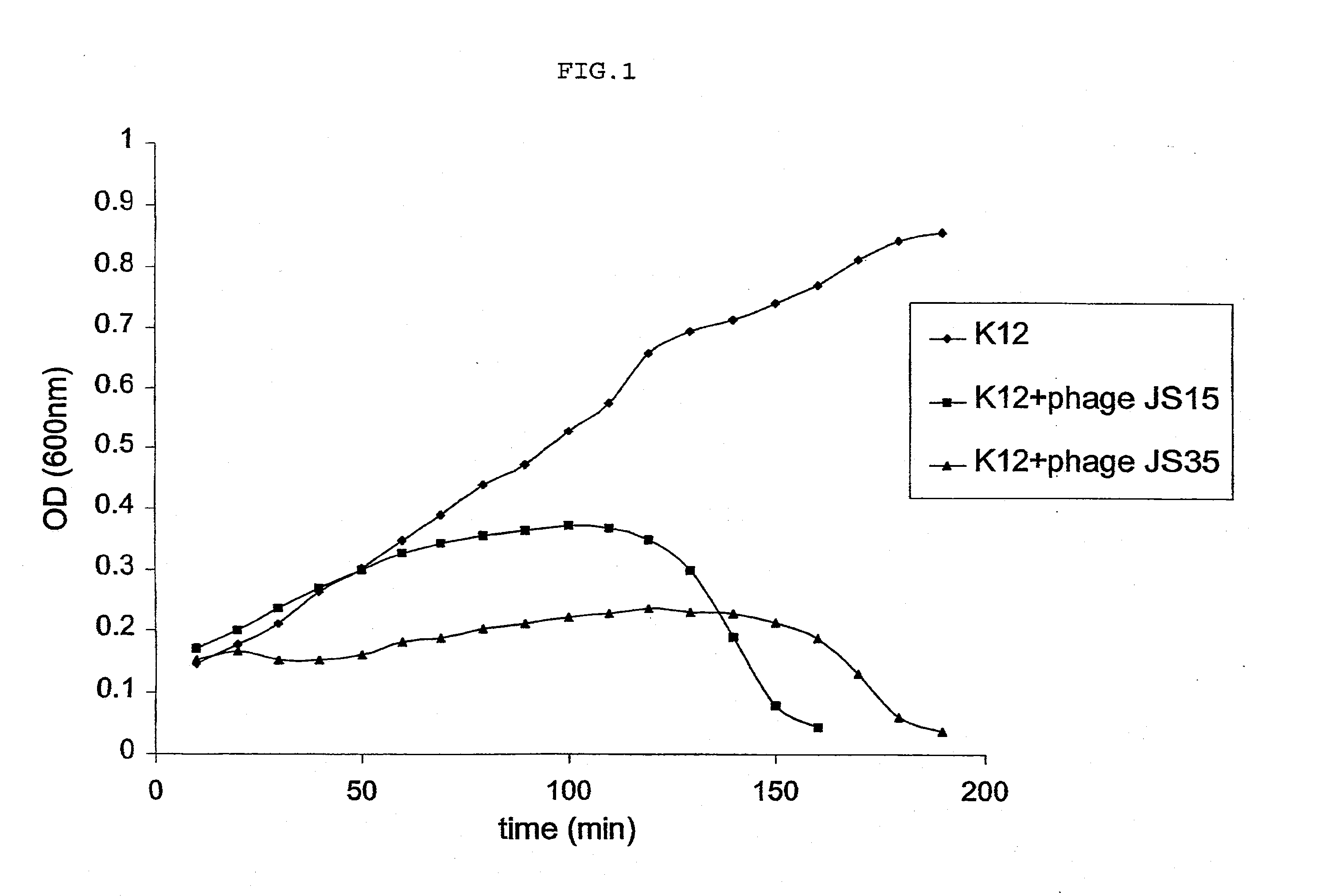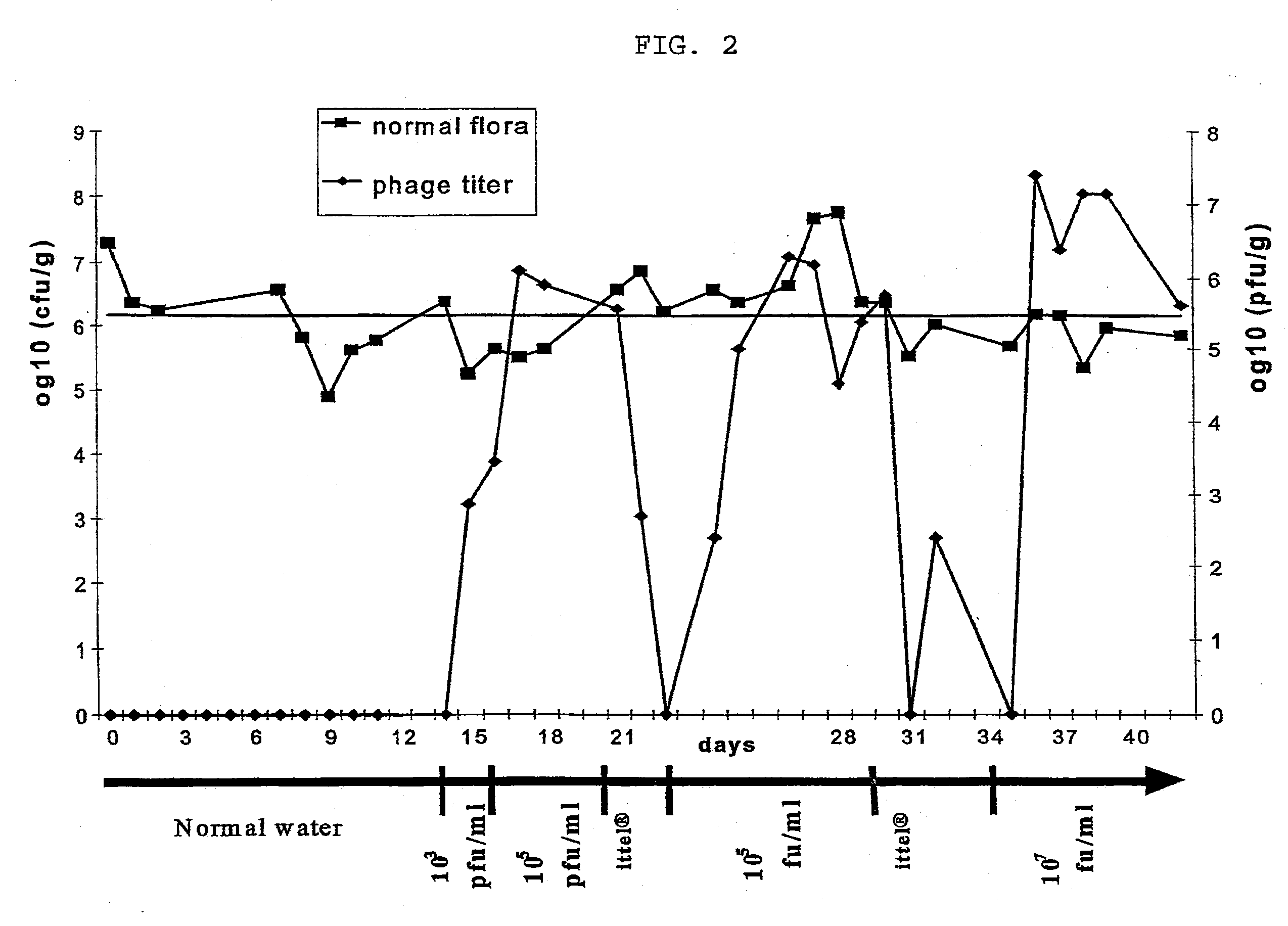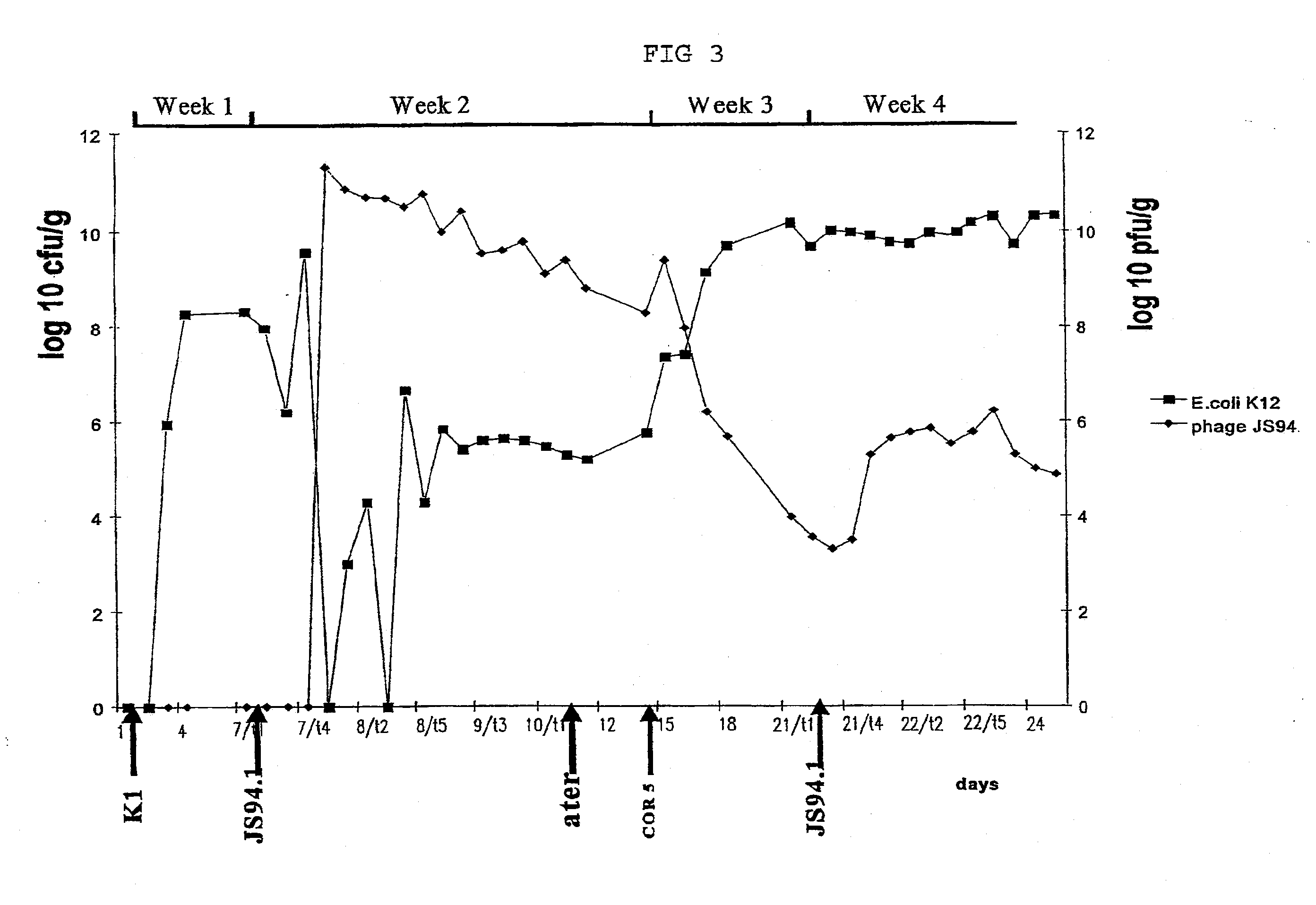Isolated phages and their use in food or pet food products
a technology of phages and food or pet food, which is applied in the field of phage isolates, can solve the problems of increasing the time that antibiotics need to be used, the potential of phage therapy has not been realized in any practical sense that is used in modem therapy, and the hospital acquired infections with gram-positive bacteria have already become untreatable, etc., to achieve the effect of reducing the risk of infection
- Summary
- Abstract
- Description
- Claims
- Application Information
AI Technical Summary
Benefits of technology
Problems solved by technology
Method used
Image
Examples
example 1
Selection of Phages According to the Invention
Material and Methods
Preparation of Stools Samples
[0049] The stool samples were stored frozen at ˜20° C. at the hospital and were transported on dry ice to Lausanne. The thawed stool sample (˜10 g) was resuspended in TS (8.5 g / l NaCl, 1 g / l tryptone) to a final volume of 30 ml. The resuspended stool samples were then centrifuged for 15 minutes at 10.000 rpm in 50 ml Falcon tubes. One ml of each stool was filtered through a Millex AP20 prefilter followed by a 0.45 μm Minisart filter. After resuspension all stool samples were stored at +4° C. since T4 phages are sensitive to repeated cycles of freezing / thawing.
Bacterial Culture
[0050] All E. coli strains were propagated on Hershey broth containing 2 ml of thiamine (2 mg / ml) per liter in a glass-tube in a final volume of 5 ml under agitation (240 rpm) at 37° C. for overnight incubation. After growth, the strains were streaked on a Petri dish (Hershey agar) in order to obtain single co...
example 2
Characterization of Phages with a 170-kb Genome Size
Material and Methods
Pulse Field Electrophoresis (pFGE)
[0072] PFGE blocks of 1% agarose containing 106 plaque-forming units of the indicated phage were incubated overnight in a lysis buffer (0.05M EDTA, 10 mM Tris pH 8.0, 1% SDS and 50 μg of proteinase K) and washed three times for one hour in 10 ml of TE (10 mM Tris pH 8.0, 1 mM EDTA). These blocks were analyzed by electrophoresis in 1% agarose low melting gel (0.5% TBE: 45 mM Tris-borate, 1 mM EDTA) for 20 hours at 6V / cm, 14° C. with a pulse time of 1-20 sec. The gel was stained for 30 min. with ethidium bromide (0.5 μg / ml).
DNA Purification
[0073] Purified phages were treated with proteinase K at a final concentration of 1 mg / ml for 2 h at 37° C. and 3 M sodium acetate pH 4.3 was added. DNA was extracted twice by phenol-chloroform and precipitated with 2 volumes of ethanol. After centrifugation, pellets were washed with 70% ethanol and resuspended in 50 μl of TE. DNA was di...
example 3
In-Vivo Experiments with Phages According to the Invention
Material and Methods
Experimental animals:
[0079] Eight-week-old C3H male mice (in groups of 5, otherwise noted) were used for infection experiments. Each mouse was kept in a cage with a filtered-top. The drinking water used was sterile Vittel®. Feces were taken once a day and resuspend in one ml PBS (phosphate-buffered saline). To enumerate E. coli, decimal dilutions of the resuspended feces were plated on Drigalski agar (Biorad). Phages were added to the drinking water. 0.5 ml of resuspended feces was filtered and phages were enumerated. Mice were sacrificed when phages were still present in the water and an autopsy was performed. Different organs were taken (colon, duodenum, ileum, jejunum, lymph nodes and liver) and tested for the presence of E. coli and phages.
In Vivo Phage Mix Activity in a Mouse Model:
[0080] In the first two weeks, normal water was used then sterile Vittel®.1 n the third week, a mix of four T4-li...
PUM
| Property | Measurement | Unit |
|---|---|---|
| length | aaaaa | aaaaa |
| length | aaaaa | aaaaa |
| OD | aaaaa | aaaaa |
Abstract
Description
Claims
Application Information
 Login to View More
Login to View More - R&D
- Intellectual Property
- Life Sciences
- Materials
- Tech Scout
- Unparalleled Data Quality
- Higher Quality Content
- 60% Fewer Hallucinations
Browse by: Latest US Patents, China's latest patents, Technical Efficacy Thesaurus, Application Domain, Technology Topic, Popular Technical Reports.
© 2025 PatSnap. All rights reserved.Legal|Privacy policy|Modern Slavery Act Transparency Statement|Sitemap|About US| Contact US: help@patsnap.com



